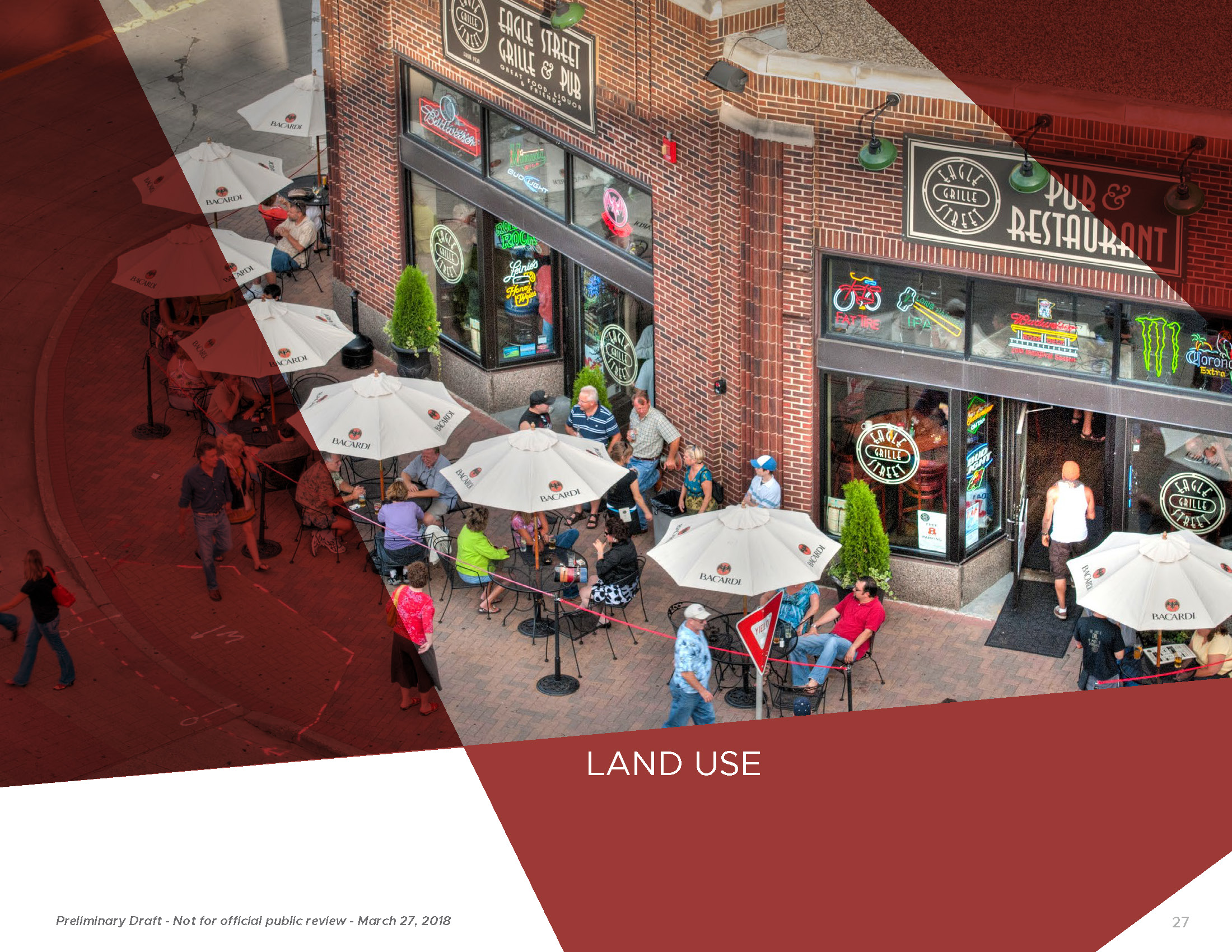
The 2040 Comprehensive Plan is divided into seven main chapters, each focusing on a specific topic area. The chapters are informed by Saint Paul’s core values, the community’s priorities, and the city’s current focus areas.

The Land Use Chapter guides the overall physical layout and organization of Saint Paul. Policies set forth in this chapter promote development patterns that strengthen neighborhoods; improve walkability; increase access to housing, jobs, schools, parks and services; promote equitable access to neighborhood centers; help to reduce carbon emissions; and accommodate growth by leveraging transit investments.
As Saint Paul has developed, land uses have changed in conjunction with transportation trends, evolving zoning regulations and market forces. The land uses that have developed over time have a close relationship to natural forms and systems in Saint Paul, including the Mississippi River. The overall composition of these natural and built characteristics influences how people live, move, and do business in Saint Paul.
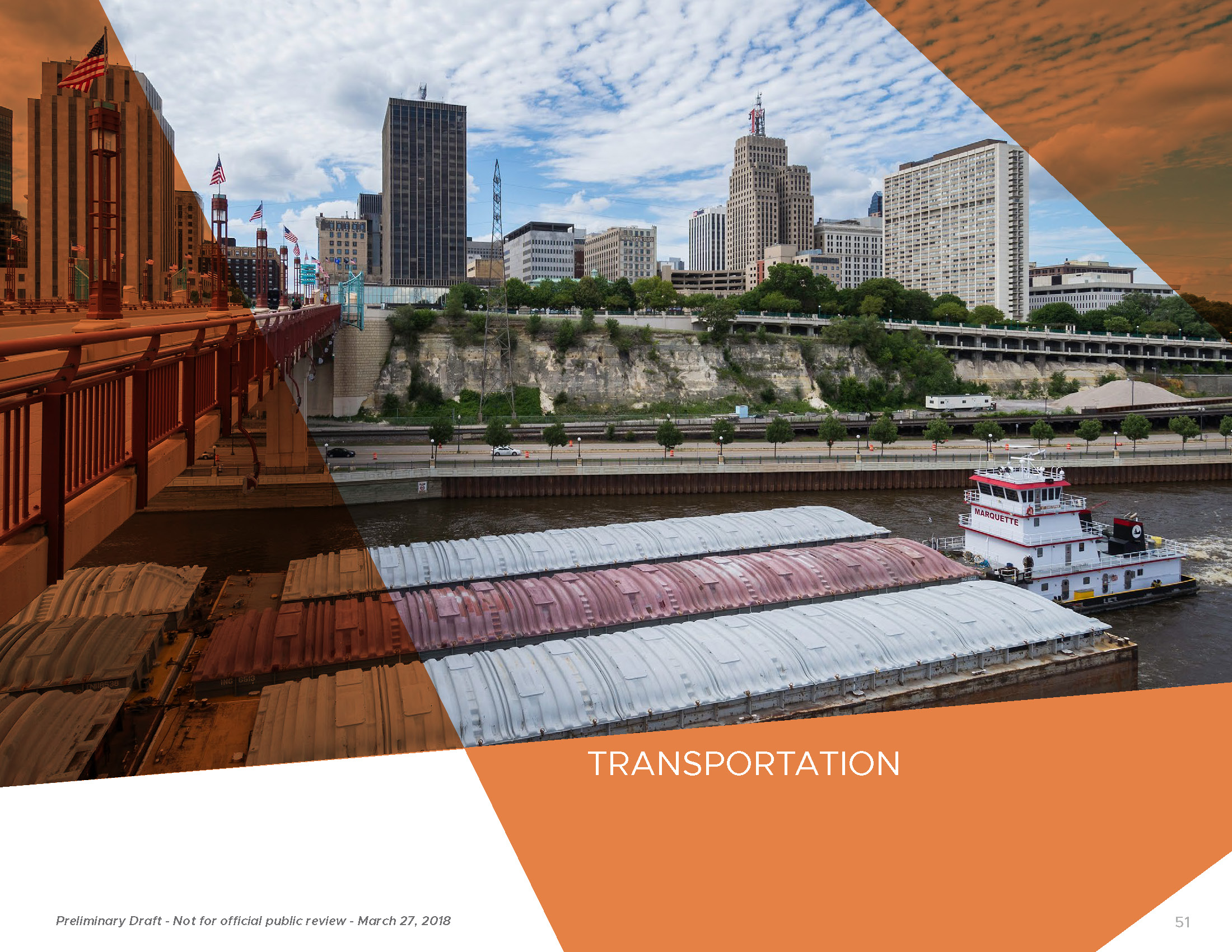
The Transportation Chapter guides the creation of a safe, equitable and well-maintained multi-modal transportation system in Saint Paul that supports the needs of all users, enhances vitality, and sets the stage for infill development to accommodate the city’s projected growth. The transportation system relies primarily on streets, which connect people to jobs, homes, shopping, education and recreation, but also includes water (the Mississippi River) and rail. It is important to have a consistent long-term vision that will gradually, strategically and consistently remake the city’s transportation system so that it works better for all users.
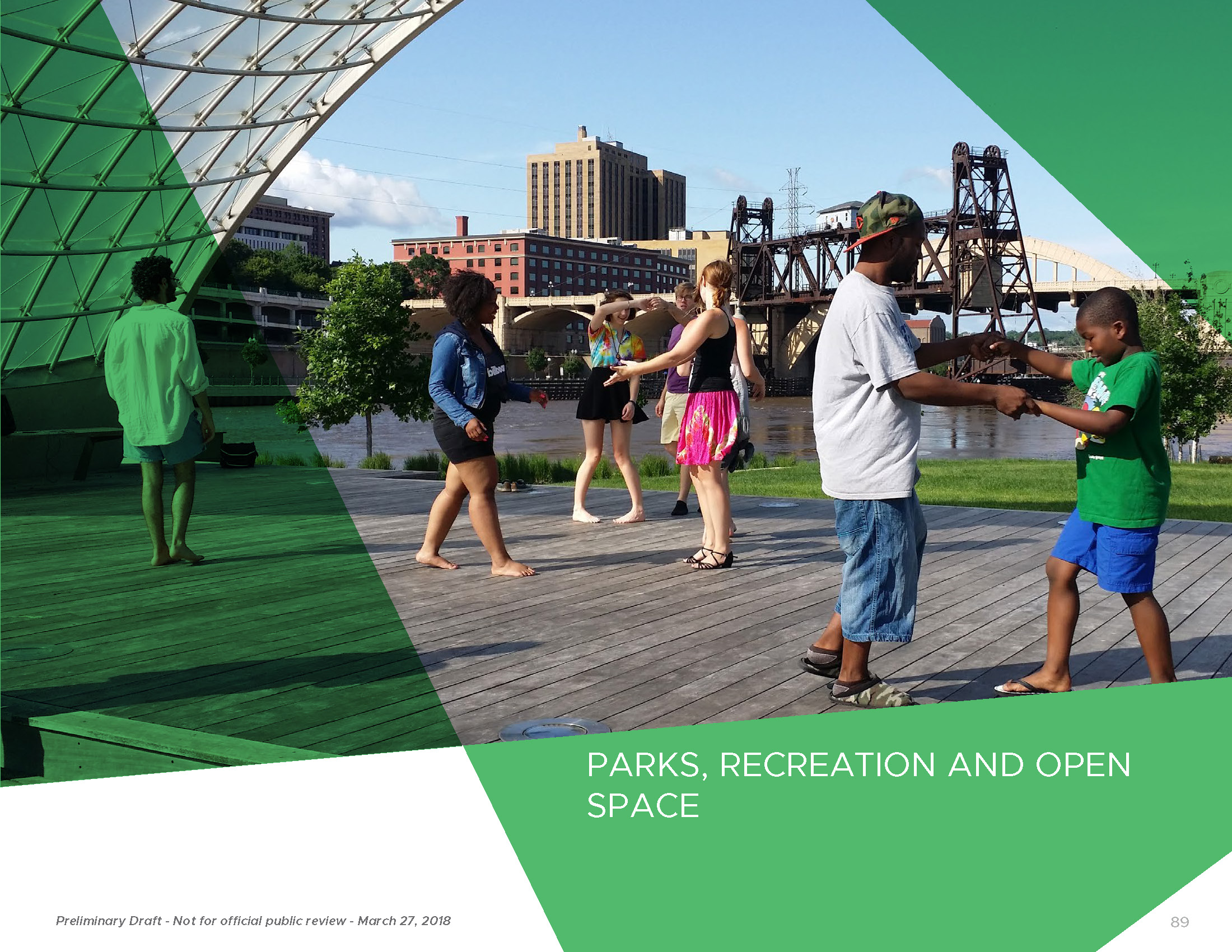
The Parks, Recreation and Open Space Chapter sets broad policy to create an equitable, safe, connected and sustainable park system for all users. The Saint Paul park system includes parks, parkways, recreation centers, public spaces, and trails. It comprises a large, diverse and vibrant network of people, spaces and facilities that is recognized by Saint Paul citizens as one of the city’s great shared assets. Together, the system components form a vital connective tissue, facilitating a sense of community and fostering stewardship of nature and community spaces.
Park facilities and programs improve the quality of life for all residents and visitors, regardless of age, background or ability. They foster public health by providing opportunities for physical fitness, and promoting mental and social well-being. Parks and community centers serve an important role for the city’s youth by providing safe and healthy places and activities. Parks connect us to the Mississippi River and lakes by providing access and spaces to enjoy them. Great public spaces are an important component of sustainable economic development, drawing and retaining residents, increasing nearby property values, and attracting businesses.
Change is constant in Saint Paul, and the City must respond accordingly. This change can take the form of demographic shifts (especially regarding age and ethnicity), advances in technology and ongoing development. It will be necessary to periodically evaluate how well the park system is meeting changing needs, challenges and opportunities.
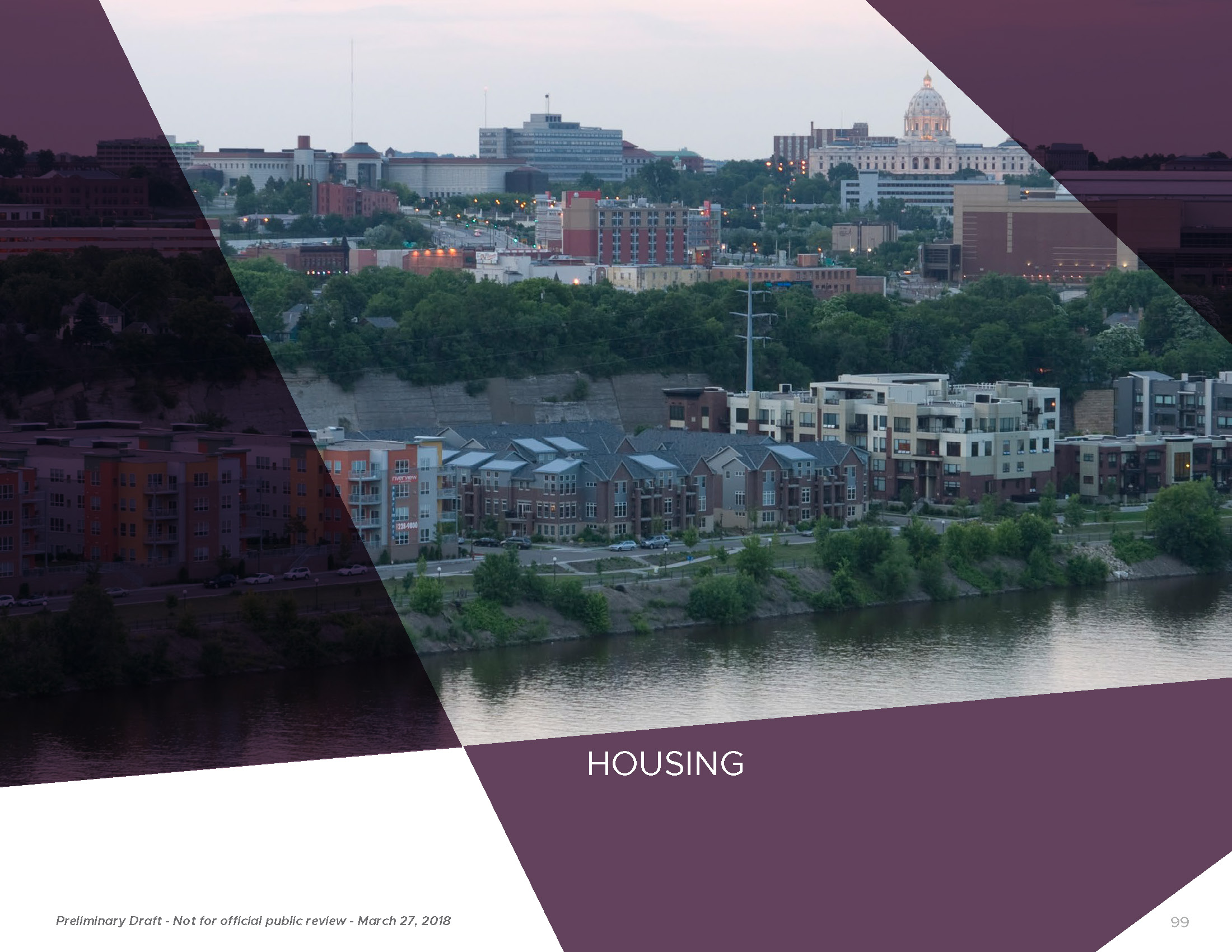
Housing meets a fundamental human need and, as such, is a critical infrastructure system of a city. Unlike other infrastructure systems, such as roads or water, a city does not have full control of housing development, maintenance, replacement or cost, as housing is generally provided through the private market. What cities can do is administer planning, zoning and building codes to guide the location of residential development, and ensure that housing is healthy and safe. Cities also have responsibilities to manage a complex set of issues around housing fairness, choice, health, stability and affordability, all of which are tied to a city’s core values.
The Housing chapter continues to embrace Saint Paul’s decades-old commitment to an all-incomes housing strategy by addressing the broad continuum of housing needs and challenges faced by Saint Paul residents – from those experiencing homelessness to those in need of affordable housing, to those wishing to buy a home or rent an apartment in the city. In addition, the chapter begins to challenge some deeply-rooted beliefs around neighborhood housing and household types to help provide additional housing choice for Saint Paul’s growing, aging, and increasingly diverse population over the next 20 years. Finally, housing policy cannot be considered in a vacuum. It needs to be thought of in terms of economic development (to build household income and net worth), transportation (to connect people from home to work) and land use (to locate parks, employment, education and other uses in close proximity to housing).
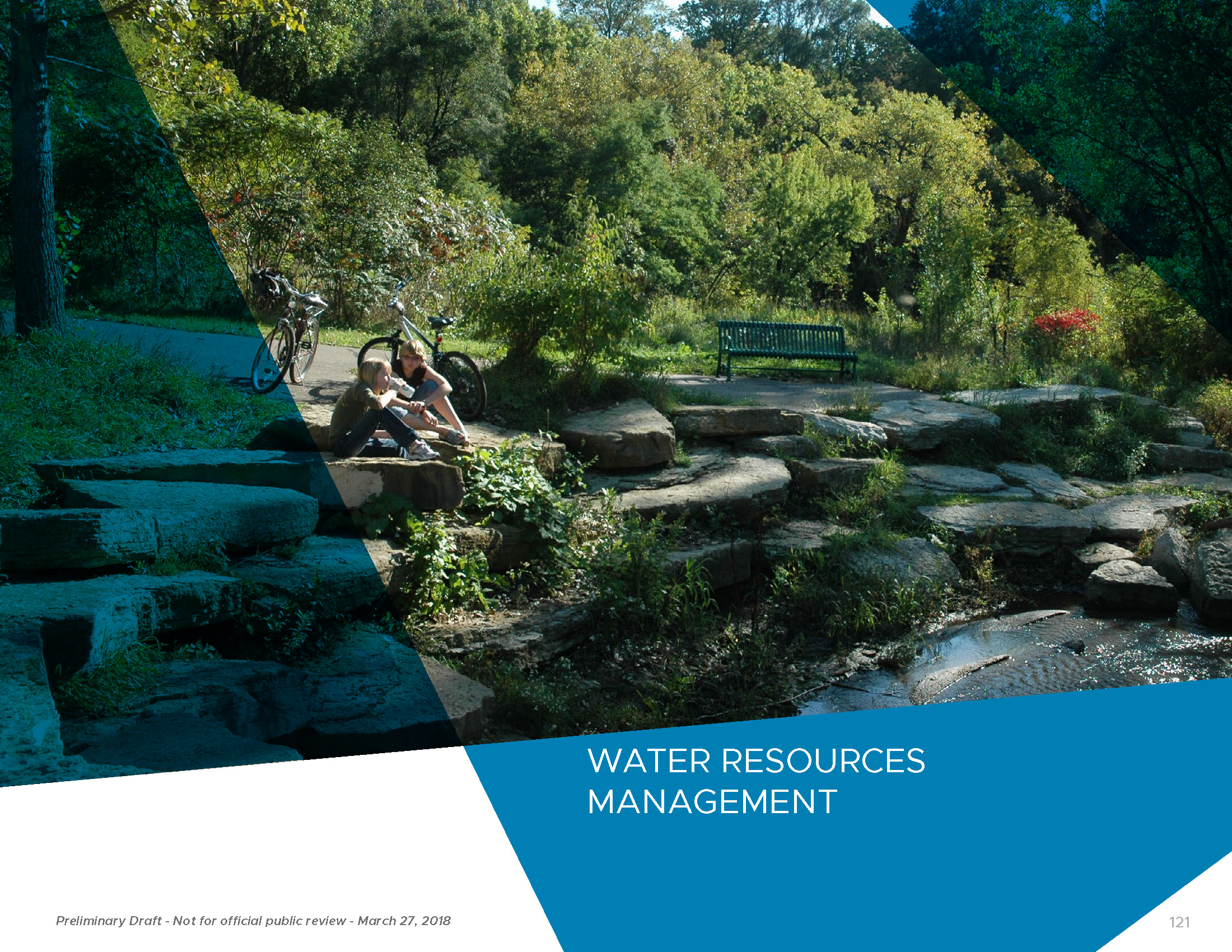
The Water Resources chapter provides guidance and a comprehensive policy framework for the use and integrated management of water resources and related infrastructure. These resources include surface water, ground water, water supply and the potable water distribution system, stormwater and stormwater management infrastructure, and the wastewater conveyance system. The Water Resources chapter includes the Saint Paul Local Surface Water Management Plan (2017) and the Water Supply Plan (2016), both of which are adopted by reference as Appendix B and Appendix C, respectively.
Water is vital to everything – human life and the natural ecosystems that support us, our economy, and the things we use and consume every day. While water is abundant, it is finite; it is estimated that less than one percent of the Earth’s water is freshwater available for human use. Saint Paul is blessed by a drinking water system that is connected to abundant supplies of both treatable surface water and abundant, clean ground water. Protecting that supply, using water sensibly, and maintaining the infrastructure that treats and distributes clean water are all key to maintaining a safe, reliable and sustainable water supply.
The proper treatment of wastewater is vital to both public health and continued surface water and groundwater quality. In an older, built-up city like Saint Paul, maintenance of, and improvements to, aging metropolitan municipal and privately-owned wastewater conveyance and treatment infrastructure is critical to both meeting the needs of current citizens and accommodating new demand as the city continues to grow.
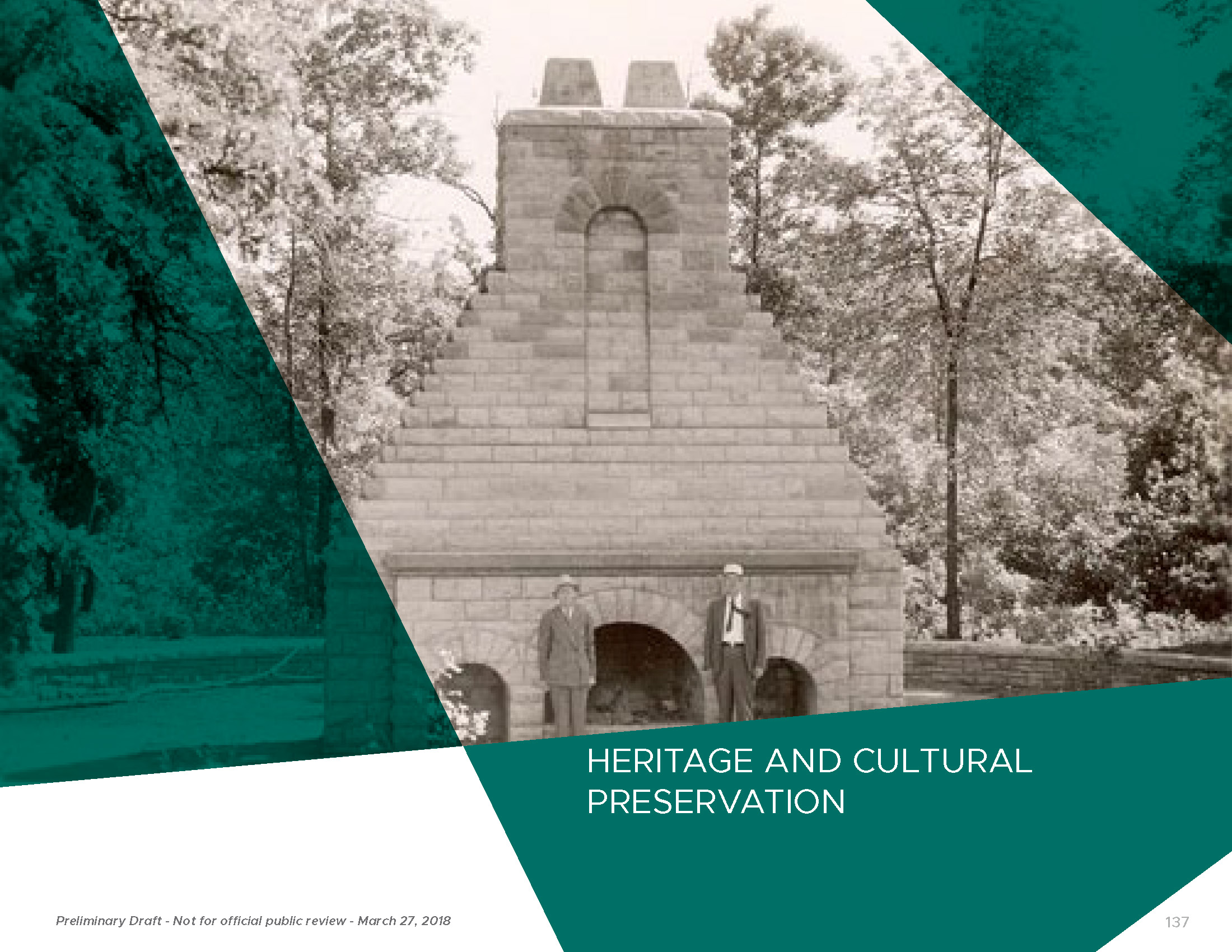
The Heritage and Cultural Preservation Chapter sets policy for the identification, preservation and celebration of architecturally, culturally and historically significant buildings, districts, sites and views in Saint Paul. It also sets a policy direction for the Heritage Preservation Commission (HPC). The City’s activities associated with the preservation, rehabilitation, restoration, and reconstruction of historic and cultural resources should be sustainable and equitable; improve the quality of life for all residents and visitors; guide public and private investment; express a sense of place and pride; celebrate the racial, ethnic and cultural diversity of the community; and be embraced in all facets of the City’s work.
Existing structures are important components of sustainable economic development, and the cultural landscapes that are integral to the city inherently connect this chapter with each chapter of the Comprehensive Plan. Through this chapter, Saint Paul strives to be a leader in preserving historic and cultural resources; engaging all stakeholders in education and evaluation activities that are inclusive, responsive, practical and respectful; and integrating preservation and related activities into the work of all City departments. This work must be mindful of demographic, climate, investment and technological changes that impact Saint Paul’s built and natural environments.
The Mississippi River Corridor Critical Area (MRCCA) Chapter guides land use and development along the Mississippi River. Saint Paul contains 17 miles of river and 26 miles of shoreline within its city limits, the longest of any municipality within the Critical Area. While other plans have been adopted as part of the Comprehensive Plan that address the city's relationship to the Mississippi (e.g. the Great River Passage Master Plan), the Critical Area chapter uniquely responds to the requirements of Minnesota Rules, Chapter 6106, which lays out a regulatory framework to protect the MRCCA's resources and manage the balance between natural systems, urban development, recreation, and commerce.
Designated by Governor's Executive Order in the 1970s, the Mississippi River Corridor Critical Area is a land corridor along the Mississippi River in the Twin Cities Metropolitan Area governed by special land planning requirements and land development regulations. These regulations, which are implemented through local MRCCA plans and ordinances, protect and preserve the natural, scenic, recreational, and transportation resources of this section of the Mississippi River. The MRCCA comprises 72 miles of river and 54,000 acres of surrounding land in 30 local jurisdictions.
Last Edited: August 21, 2024